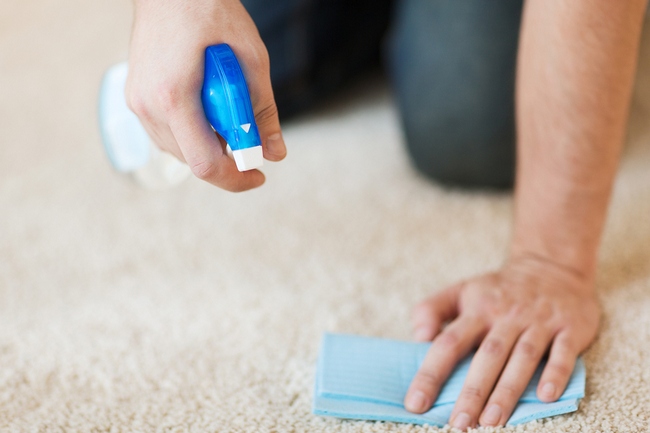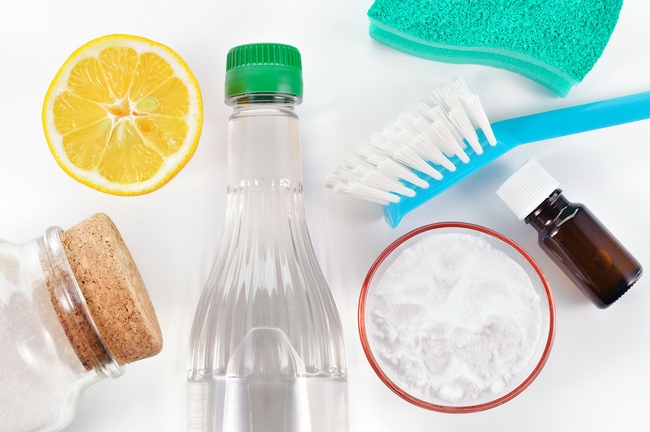- Make It Yourself Lavender Heart-Shaped Bath Bombs!
- 20 Things You Never Knew About “Down There”
- 12 Best Foods For Those Suffering From Arthritis Pain
- 12 Personal Hygiene Mistakes Almost Everyone Makes (Mom Never Told You About #4!)
- 15 Medicinal Plants And Herbs From The Cherokee People
- 12 Mind-Blowing Benefits Of Drinking Coconut Water During Pregnancy
- 12 Outstanding Winter Foods That Won’t Fatten You Up Like A Christmas Turkey
Clean Every Type of Floor in Your Home Without Using Toxic Products

Photo credit: bigstock
The floors of our homes are the largest surface area that we will need to clean on a regular basis. Unfortunately, too many of us use toxic cleaning products that we inhale until they eventually wear away or evaporate. Why use toxic, not to mention expensive, floor cleaners when there are dozens of natural ways to clean floors?
No matter what type of flooring material you have, we have natural cleaning solution for you.
-
Linoleum, Stone, or Tile Floors –
Tile and linoleum floors can be easily cleaned with nothing more than vinegar and water. If you do an online search you will find that the ratios of water and vinegar can vary greatly, but the recipes below are well proven favorites. You can always adjust the amount of vinegar or soap is you find you need something stronger or if you get streaks on your floor.
For really dirty floors, always sweep or vacuum first, then try:
¼ Cup of plain, white vinegar
¼ Cup of baking soda
1 Tablespoon of liquid dish soap
2 Gallons of hot water
You can add a couple drops of essential oil for a pretty smell, any type will do. This recipe should not need rinsing unless you see streaks. If you get streaks regularly from this recipe, cut back a bit on the baking soda and soap.
SEE ALSO: 5 Fantastic Non-Toxic Cleaners that Should be in Your Home
-
Marble, Travertine, or Limestone –
Never, ever use vinegar or lemon juice on these types of floors as the acids they contain can wash off their protective coating. These types of floors can be easily cleaned with a steam mop, but if you don’t use one or don’t own one, try adding just a squirt of dish soap or castile soap into a 2 gallon bucket of hot water. If you get streaks, rinse with clear water and use less soap next time.
-
Brick or Stone Floors –
These can be tricky to clean as the surfaces are generally uneven. Try this recipe:
1 Cup of plain, white vinegar
1 Gallon of hot water
15 Drops of peppermint or eucalyptus essential oil
This will disinfect the floor while the essential oil will add a bit of a shine.
Continue to Page 2
-

Photo credit: bigstock
Wood, Laminate, and Bamboo –
Commercials they show on television of those steam floor cleaners makes it look so easy and perfect for every surface, but they aren’t. Steam cleaners, although great for some surfaces, are not at all good for wood, laminate, or bamboo floors.
Laminate flooring is made from several layers of material glued together. So using water to clean them, especially steam, will break down the glue that holds these floors together, eventually causing them to split. Steam will not only strip the protective finish from your hardwood floor, but then the water will seep into the wood and cause your beautiful hardwood floors to warp, crack open, and splinter. Have you ever seen what happens to wood floors, such as outside porches, when they are left exposed to rain? The same type of damage can happen to your beautiful wood floors if they become wet often.
So the rule for these types of floors is avoid water and never wet mop them. Damp mopping is ok. Sweep or vacuum the floor, then use this mixture:
¼ Cup of plain white vinegar
2 Gallons of warm water
A few drops of essential oil for scent
Put your mop or sponge in this mixture and wring it out until it is nearly dry. Think damp, not wet. If your mop drips water, ring it out again. After mopping, you can use a dry cloth or towel to dry the floor quickly and give it a nice shine.
If you have a wood floor that is not too large, you can try making a mixture of 1 part vegetable oil and 1 part vinegar and, after mixing well, rub this into the floor using a rag. Let sit for a few minutes, and then rub again with a dry towel for a great shine. This is a good solution but would be extremely labor intensive to do over large areas.
Some people suggest using lemon juice instead of vinegar, however, if you read any manufacturers website, they always warm against using lemon juice to clean flooring as it damages the finish after repeated washings. Of course some of these manufacturers recommend using soap but, over time, soap is going to accumulate on your floor and you will need to rinse, which means using more water on your floor. This is why the vinegar recipe above makes the most sense when it comes to cleaning these types of floors. Read more about other suprising uses of vinegar.
Another solution, if you don’t want to use vinegar, involves using tea. Brew black tea and fill a spray bottle. Use the bottle to just mist your floor and mop up the tea using just a damp mop.
All floors, no matter what type of material they are made of, can be scratched by dirt so it’s important to sweep and mop regularly. Mats placed both outside and inside doorways can greatly help limit the amount of dirt that gets brought into your home.
You might also want to consider going Japanese. In Japan, people take off their shoes just inside the doorway, (or outside on a porch if they have one) and put on house slippers. House slippers are NEVER worn outside and outside shoes are never worn inside the home. This keeps most dirt, pollen, and other pollutants outside and not tracked all over the home.
The more often you sweep or vacuum and how often you mop will be the deciding factor in how long your floor finish will last as well as how long the floor itself will last, and look.
Sources:
































